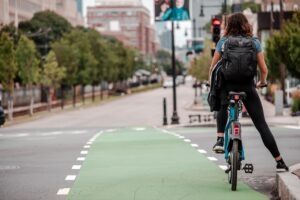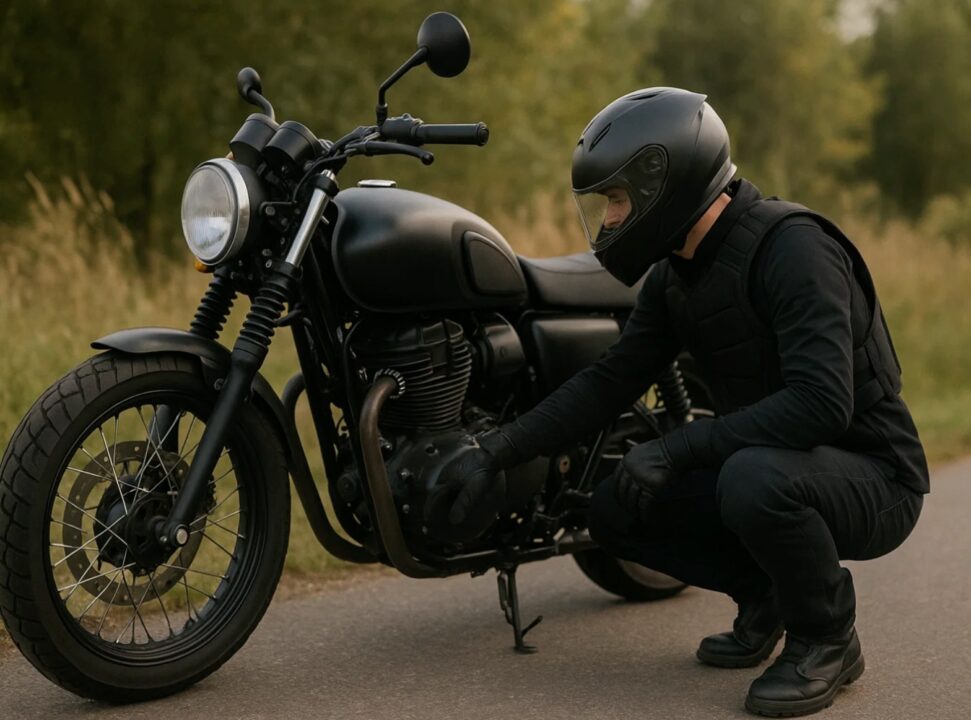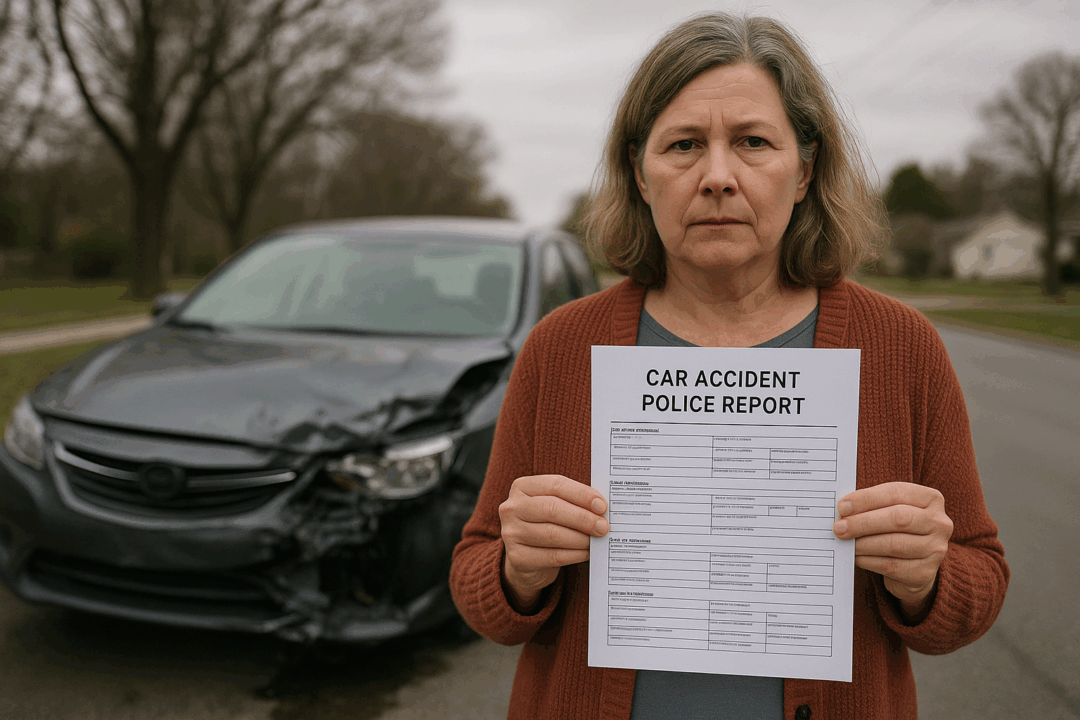To stay safe on Boston’s streets, cyclists must adhere to established traffic laws and regulations, wear essential safety gear such as helmets and reflective clothing, and opt for well-designed bike lanes. We must also be mindful of hazards created by motor vehicles, anticipate their actions, and maintain a heightened sense of situational awareness. By staying visible, utilizing new bike technology, and adapting to weather conditions, we can enjoy a secure and enjoyable cycling experience. However, in the unfortunate event of an accident, it is crucial to consult with experienced professionals like Jason Stone Injury Lawyers, who specialize in Boston bicycle accident cases. But there’s more to it – let’s explore the nuances of staying safe on Boston’s streets.
Key Takeaways
- Follow all Massachusetts traffic laws and regulations to ensure compliance with local cycling rules.
- Use hand signals to indicate turns or stops and give audible warnings to pedestrians.
- Always wear a helmet if under 16 years old and ensure it meets US Consumer Product Safety Commission requirements.
- Borrow defensive riding techniques to anticipate motorist and pedestrian actions.
- Plan routes carefully to prioritize cyclist well-being and avoid dangerous intersections.
Understanding Boston Bike Laws
When traversing Boston’s streets, understanding bike laws is crucial for safety, as cyclists must follow all Massachusetts traffic laws and regulations while utilizing hand signals to indicate turns or stops and giving audible warnings to pedestrians. As cyclists, we must be aware of the rules of the road to protect our safety and the safety of others. In Boston, pedestrians always have the right of way, and we must always yield to them. We must also wear helmets if we’re 16 or younger, meeting the US Consumer Product Safety Commission’s requirements.
To stay safe while cycling in Boston, we should practice defensive riding, anticipating the actions of motorists and pedestrians. We should ride in designated bike lanes and follow traffic signals like motorists. We must also be visible and alert, wearing bright clothing and using lights at night. Following these bike safety tips can minimize the risk of accidents and injuries.
Moreover, we should be mindful of motorist responsibilities, such as checking for bicyclists before opening their doors and passing at a safe distance. By understanding these regulations, we can better traverse Boston’s streets and reduce the risk of accidents. By adopting safe cycling practices and following Boston’s cyclist safety guidelines, we can enjoy the city’s scenic routes while safeguarding our safety and the safety of others.
Wearing Essential Safety Gear for Boston Streets
We wear crucial safety gear, including helmets, reflective clothing, and lights, to protect ourselves from the risks of cycling on Boston’s streets. As cyclists, accidents can happen even with the best precautions, but donning the necessary safety gear can greatly reduce the risk of injury or death.
| Safety Gear | Purpose | Boston Regulations |
|---|---|---|
| Helmets | Protects head from trauma | Mandatory for riders 16 and under |
| Reflective Clothing | Increases visibility to motorists | Recommended for low-light conditions |
| Lights | Enhances visibility to motorists | Required for nighttime riding |
Choosing Safe Boston Cycling Routes
As cyclists, we’ve learned that riding Boston’s streets safely requires choosing routes that prioritize our well-being by minimizing interactions with motor traffic. To protect ourselves while biking in Boston, we need to be mindful of the roads we take. We’ve found that some of the best routes for safe cycling in Boston are those with dedicated bike lanes, such as the ones on Commonwealth Avenue, Massachusetts Avenue, and the Esplanade. These lanes provide a buffer between us and motor vehicles, reducing the risk of accidents.
When using bike lanes, we follow Boston bike lane usage tips, such as staying within the lane markings and yielding to pedestrians. We also avoid riding on sidewalks, as this can increase the risk of collisions with pedestrians or other obstacles. Additionally, we take advantage of bike-friendly streets like those in the North End and Beacon Hill, which have slower speed limits and less traffic.
Being Visible on Boston Roads
To enhance our safety while cycling in Boston, we must prioritize being visible on the road by taking specific steps, such as wearing high-visibility clothing and equipping our bikes with lights. As cyclists, we’re aware that sharing the road with motorists can be hazardous, especially at night or in low-light conditions. That’s why taking proactive measures is vital to guarantee our visibility.
In Boston, cyclist safety programs emphasize the importance of being seen on the road. Cycling in Boston at night requires extra caution, and we can take steps to minimize our risk. By wearing reflective gear, such as arm and leg bands, and attaching lights to our bikes, we can increase our visibility to motorists. Additionally, we can take bike safety courses in Boston to learn more about safely riding the city’s streets.
When biking in Boston, we must know our surroundings and anticipate potential hazards. Being visible and alert can reduce our risk of accidents and have a safe ride. Furthermore, understanding how to ride Boston streets on a bike is key to our safety. By following traffic laws, using designated bike lanes, and communicating with motorists, we can minimize our risk of accidents.
Anticipating Other Driver Behavior
Anticipating the actions of other drivers and road users is integral to staying safe on Boston’s streets. A vital aspect is developing a heightened situational awareness to recognize and mitigate potential hazards. As cyclists, we understand the importance of adhering to Boston cycling laws and safety guidelines, such as using hand signals, following traffic rules, and giving an audible signal before passing pedestrians.
Despite these efforts, we must also be prepared for the actions of other drivers. This includes being cautious of motor vehicles that may open their doors without checking for oncoming cyclists and understanding that drivers must pass us safely to the left when overtaking. We must also expect that some drivers may not properly yield to us when turning left or right. Being proactive in our safety, we should anticipate and react to these hazards.
Having experienced legal support is crucial in cases where accidents occur. A bicycle or bike accident lawyer in Boston can provide invaluable guidance in navigating the claims process and ensuring fair compensation for our injuries. Utilizing the expertise of a top bicycle accident attorney in Boston can significantly impact the outcome of our case.
Communicating With Motorists
We frequently use a combination of non-verbal and verbal cues to communicate effectively with motorists, emphasizing safety even more. One vital aspect of this communication is hand signaling. We must use clear and consistent hand signals to indicate our intentions, such as stopping, turning, or changing lanes. This way, motorists can anticipate our actions and react accordingly, reducing the risk of accidents.
We must make eye contact with drivers waiting to turn or merge when approaching an intersection. This helps to establish intent and confirms that both parties understand who has the right of way. Additionally, we should avoid unexpected maneuvers or sudden movements that can cause confusion or panic among motorists.
Proper positioning on the road is also vital. Riding in designated bike lanes and maintaining a predictable path allows motorists to anticipate our movements better and maintain a safe distance. We must also be mindful of our visibility by wearing reflective gear and using lights on our bicycles, especially at night or in low-light conditions. You should call us now if you were in a neighboring city and were involved in a Cambridge bicycle accident.
Tragically, accidents can still occur despite our best efforts to communicate. Suppose you are involved in a bicycle accident in Boston. In that case, it is vital to seek the assistance of a dedicated Boston bicycle accident lawyer, such as Jason Stone Injury Lawyers. These experienced professionals will help you find your way through the legal system, ensuring that you receive fair compensation for your injuries and dealing with the nuances of the process.
Riding Defensively at Intersections
When traversing Boston’s busy intersections, our greatest safeguard against accidents lies in riding defensively and maintaining vigilant awareness of all surrounding traffic. As cyclists, we must anticipate the actions of motorists, pedestrians, and other cyclists to avoid potential hazards.
- Anticipate motorist behavior: Be prepared for motorists to make sudden turns or stops, and adjust your speed and position accordingly.
- Make eye contact: Establish visual contact with motorists and pedestrians to confirm that they see us and know our intentions.
- Use hand signals: Indicate our intentions to turn or change direction, giving others ample time to react.
- Position ourselves safely: Ride in a visible and predictable path, avoiding blind spots and areas with limited visibility.
Managing Road Hazards and Debris
Cyclists must be prepared to confront and maneuver various road hazards and debris that can arise unexpectedly. As we ride through Boston’s streets, we must be vigilant and anticipate potential dangers. Potholes, cracked pavement, and uneven road surfaces can cause us to lose control or fall off our bikes. We must also watch out for debris like broken glass, loose gravel, and discarded trash that can puncture our tires or cause a slip and fall accident.
To manage these hazards, we can take several precautions. First, we should always focus on the road ahead, scanning for potential dangers. We should also ride defensively, anticipating the actions of motorists and pedestrians around us. When we spot a hazard, we should slow down and give ourselves plenty of time to react. If possible, we should avoid the hazard altogether by changing our route or detaining.
We should also ensure our bikes are in good working condition, with properly inflated tires and functioning brakes. Regular bike maintenance can help prevent mechanical failures that can exacerbate the risks posed by road hazards. By being aware of our surroundings, riding defensively, and maintaining our bikes, we can minimize the risks associated with road hazards and debris and stay safe on Boston’s streets.
Using New Bike Technology to Stay Safe
New bike lanes and innovative technologies are revolutionizing cyclist safety on Boston’s streets. Cyclists are always looking for ways to stay safe while enjoying their rides. With the rise of new bike technology, we’re seeing a notable shift towards improved safety features.
These innovations are making a difference in bicycle accidents:
- Sensor-activated lights: These lights detect when a car is approaching and alert the driver to our presence, reducing the risk of collisions.
- Smart helmets: Equipped with built-in cameras and sensors, these helmets can detect potential hazards and alert us through a mobile app.
- GPS tracking: This feature allows us to share our route with friends and family, ensuring someone always knows where we are.
- Blind spot alerts: Some bikes now come equipped with sensors that alert us when a vehicle is in our blind spot, reducing the risk of collisions.
These advancements are a game-changer for cyclists in Boston. Incorporating these technologies into our rides can dramatically reduce our risk of accidents and injuries. As we continue to advocate for safer roads and infrastructure, it’s exciting to see how technology is helping to bridge the gap. By staying informed and taking advantage of these innovations, we can enjoy our rides with greater confidence and peace of mind.
Staying Alert and Focused While on a Bicycle
We maintain alertness and focus on our ride by regularly checking our bike’s condition and verifying we follow traffic laws and safety guidelines. This diligence helps prevent mechanical issues that might cause accidents. We meticulously inspect our bikes before each ride, checking the brakes and tire pressure and making certain the chain is properly greased and adjusted. This guarantees our safety and reduces the likelihood of mechanical failures that might distract us from the road ahead.
Additionally, we strictly adhere to Boston’s bike laws. For instance, we always wear helmets and abide by traffic signs. We stop at red lights, heed warning signs, and yield to pedestrians. We use hand signals to indicate our intentions, allowing other road users to react accordingly. In addition, we avoid riding side-by-side in narrow lanes and instead ride in a single-file configuration when necessary. By following these guidelines, we greatly reduce the risks associated with bicycle accidents.
Moreover, we stay alert and aware of our surroundings. Keeping our eyes on the road and hands on the handlebars, we can respond promptly to changing circumstances. We also remain vigilant about potential hazards such as potholes, gravel, and other obstacles. Staying alert and focused enables us to ride Boston’s streets safely and confidently, guaranteeing our safety and that of others on the road.
Adapting to Weather Conditions
As cyclists in Boston, weather conditions substantially affect our riding experience and safety, requiring careful adjustments in our riding habits and preparation. Inclement weather, including rain, snow, and extreme temperatures, can make our rides more challenging. To safeguard our well-being, it is vital to adapt to these conditions.
Given the unpredictable Boston weather, here are key steps to take for a safe ride:
- Check Your Bike: Before heading out, make sure your brakes are functioning correctly and your tires are in good condition, as they can greatly impact your control.
- Weather-Specific Gear: Dress appropriately for the weather. In rain, wear water-resistant clothing and additional layers to stay warm. For cold weather, use gloves and a warm hat to prevent frostbite.
- Riding Techniques: Adjust your speed according to the Boston road conditions. Reduce your speed on slippery roads and avoid sudden maneuvers. Use extra caution on bridges and overpasses, which can be especially hazardous.
- Enhance Visibility: Use front and rear lights in all conditions to improve your visibility to other road users. This is vital when visibility is compromised in rain, fog, or low-light situations.
Additional Tips
- Frosty mornings may require you to manually turn lights on as cold batteries might not power them immediately.
- Practice riding on various surfaces to gain confidence.
- Plan your route to avoid hazards and make adjustments as needed.
Staying alert and focused while riding a bicycle on Boston’s streets is vital. Anticipate potential hazards and take the necessary steps to mitigate them. By adopting these measures, we can substantially reduce the risks associated with bicycle accidents, guaranteeing a safer ride for ourselves and others.
Reporting Incidents and Hazards to Local Boston Authorities
If we are involved in a bicycle accident or encounter hazards on Boston streets, it is vital to report the incident to local authorities so that appropriate action can be taken to address the issue and prevent similar occurrences. As cyclists, we are responsible for making our streets safer for everyone. Reporting incidents and hazards helps identify areas that need improvement and enables authorities to take corrective measures.
We should report incidents to the Boston Police Department’s Bicycle Unit or the Mayor’s 24-hour Hotline. Additionally, we can submit reports online through the City of Boston’s website. When reporting an incident, providing as much detail as possible, including the location, time, and description is vital. This information will help authorities to investigate and take necessary action.

Conclusion
By following these vital safety tips and regulations, we can minimize our risk of being involved in a bicycle accident and enjoy a safe and enjoyable ride on Boston’s streets. Every precaution counts, from obeying Massachusetts traffic laws to staying alert and focused. By taking these measures, we can confidently share the roads with motorists and pedestrians, promoting a culture of mutual respect and safety for all. If you or a loved one has been injured in a bicycle accident, Jason Stone Injury Lawyers are here to help. Safety is a shared responsibility, and we must all do our part to ensure our well-being on the roads.
If you have been injured in an accident, you can contact us for guidance and support by visiting Contact Us.
Not Trusting What You’re Being Told?
Better Phone Stone
(800) 577-5188
 START MY NO OBLIGATION CONSULTATION
START MY NO OBLIGATION CONSULTATION









